Table Of Contents
- Understanding the Surge: The Forces Powering Anti-Drone Advancements
- Unveiling Present and Future Innovations
- Detection System
- Tracking Systems
- Mitigation Systems
- Comprehensive Adoption of Anti-Drone Technologies across Sectors
- Evolving Regulations and Global Cooperation in Drone and Anti-Drone Technologies
- CASE STUDY: COUNTER DRONE IN UKRAINE
- How effective are Western counter drone systems against Russian drones?
- Developments Carving the Anti-Drone Industry
- The Future of the Landscape

Lalit Janardhan Katare

Koyel Ghosh
Defending Airspace: How Anti-Drone Systems Are Changing the Security Landscape

Anti-drone technology encompasses a range of systems designed to detect, track, and neutralize unauthorized drones. These technologies are crucial for addressing security, privacy, and public safety concerns arising from the widespread use of drones. Key components include radar systems, radio frequency detectors, and optical sensors that identify drone presence. Advanced solutions employ artificial intelligence and machine learning to enhance detection accuracy and response times. Countermeasures such as jamming, spoofing, and kinetic interception are used to disable or capture rogue drones.
The industry is rapidly evolving, driven by technological advancements and increasing regulatory requirements. Anti-drone technologies are advancing to address evolving drone threats in military, law enforcement, critical infrastructure, airports, and the private sector. These technologies ensure effective threat mitigation and safe drone integration. This growing field highlights the increasing need for robust drone security solutions.
Understanding the Surge: The Forces Powering Anti-Drone Advancements
The anti-drone industry is propelled by several key factors, including security concerns, privacy issues, public safety, regulatory compliance, and technological advancements. Unauthorized or malicious drones pose significant security threats, including espionage, smuggling, and attacks on critical infrastructure. These risks highlight the growing need for effective anti-drone solutions to protect sensitive areas and maintain public safety.
The rise of drones equipped with high-resolution cameras and sensors has amplified privacy concerns, as these drones can capture unauthorized images or videos of individuals, private properties, or sensitive locations. This has led individuals, corporations, and governments to adopt technologies that detect and counteract such intrusions. Public safety is another crucial factor, with unauthorized drones in restricted airspace, especially near airports, posing severe risks. Incidents of drones disrupting commercial flights and endangering air traffic have spurred investments in technologies to prevent these occurrences. Strict regulations from governments and regulatory bodies worldwide also necessitate the use of anti-drone technologies. Compliance with these regulations, such as enforcing no-fly zones around airports, requires effective monitoring, further driving demand. Lastly, advancements in radar, RF detection, AI, and ML have significantly improved the accuracy and efficiency of detecting and neutralizing drones, boosting the adoption of anti-drone solutions across various sectors.
Unveiling Present and Future Innovations
The anti-drone industry encompasses a wide range of technologies designed to detect, track, and neutralize unauthorized drones. These technologies can be broadly categorized into detection systems, tracking systems, and mitigation systems.
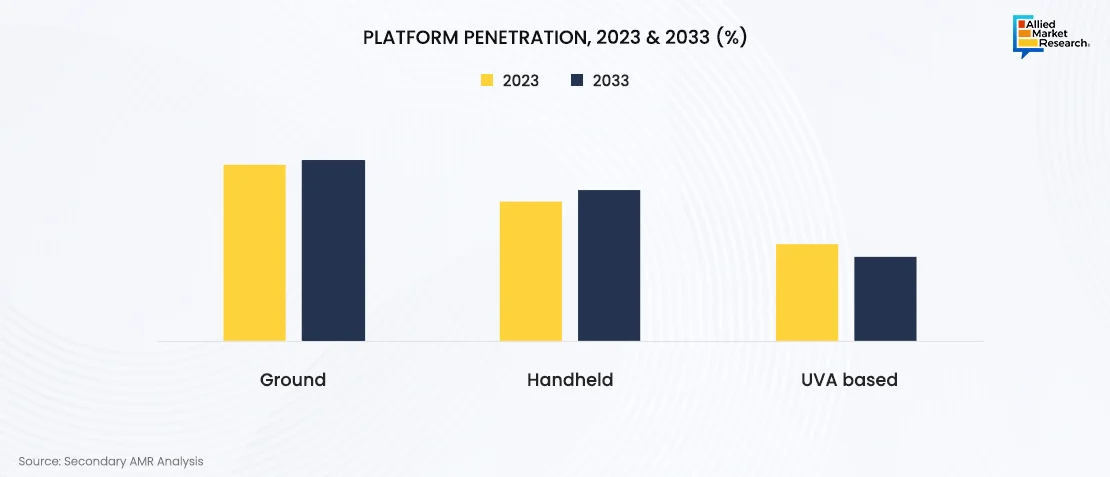
The above image represents the technology-based penetration of different anti drone applications in the industry. In 2023, detection systems dominated the market, with a penetration rate of around 46.23%, driven by the rising demand for efficient drone detection worldwide. However, the mitigation systems are expected to grow soon due to the increasing need to neutralize unregistered drone threats globally.
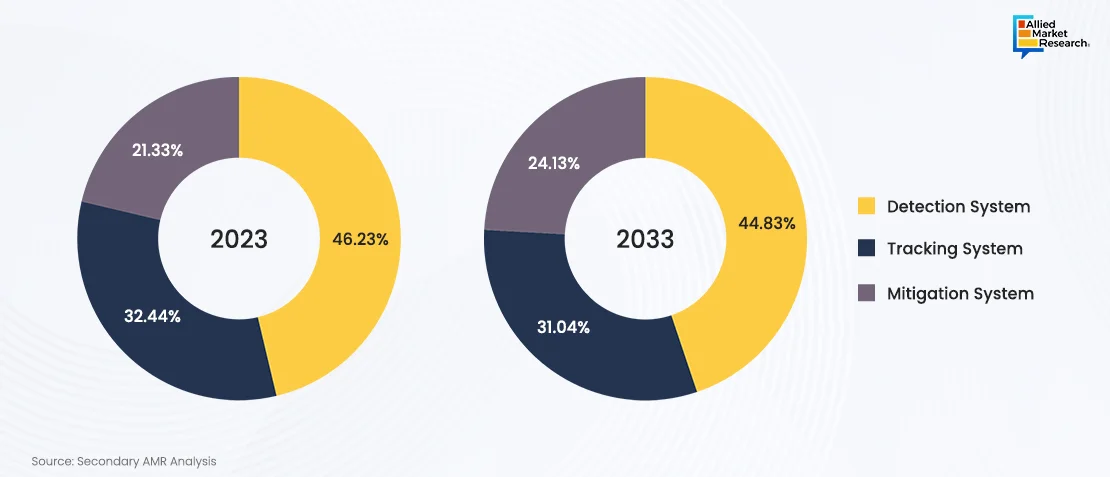
Detection System
Detection systems, utilizing various technologies, serve as the first line of defense against unauthorized drones by identifying them in specific areas. Radar-based systems use radio waves to detect and locate drones, providing real-time information about their position, speed, and altitude. These systems can distinguish between drones and other objects, such as birds, minimizing false alarms. RF detection systems monitor the radio frequencies used for drone communication and control. By analyzing these signals, they can identify drones and determine the location of their operators, particularly effective against commercially available drones using standard communication protocols. Acoustic sensors detect the unique sounds produced by drone motors and propellers, enabling real-time detection even in challenging environments. EO/IR cameras use optical and infrared imaging to detect and visually track drones, capturing high-resolution images and videos for identification. These cameras are especially useful in low-light conditions or when drones operate at a distance. Combining these technologies creates a comprehensive system for detecting and tracking drones, ensuring accuracy and reliability in various environments.
Tracking Systems
Upon detecting a drone, the tracking systems monitor its movement. Radar tracking systems continuously update a drone's position, speed, and altitude, enabling accurate tracking and prediction of its movements. GPS tracking systems determine the drone's location using the Global Positioning System and can manipulate signals to control the drone. Visual tracking systems use cameras and computer vision algorithms to follow the drone based on its visual characteristics. Combining radar, GPS, and visual tracking provides a comprehensive approach to monitoring and managing drone activity, enhancing the ability to respond to incidents effectively and ensuring better airspace security and control.
Mitigation Systems
Mitigation systems neutralize unauthorized drones using various methods. Jamming systems emit radio frequency signals to disrupt the communication link between a drone and its operator, causing the drone to lose control. Spoofing systems send false GPS signals, confusing the drone and redirecting its flight path. Kinetic interception uses projectiles, nets, or anti-drone guns to physically disable or capture drones. Directed energy systems, like high-powered lasers or microwave weapons, disable drones by damaging their electronics. These methods, when combined, provide a comprehensive approach to countering different types of drone threats, enhancing the protection of sensitive areas from unauthorized drone activities.
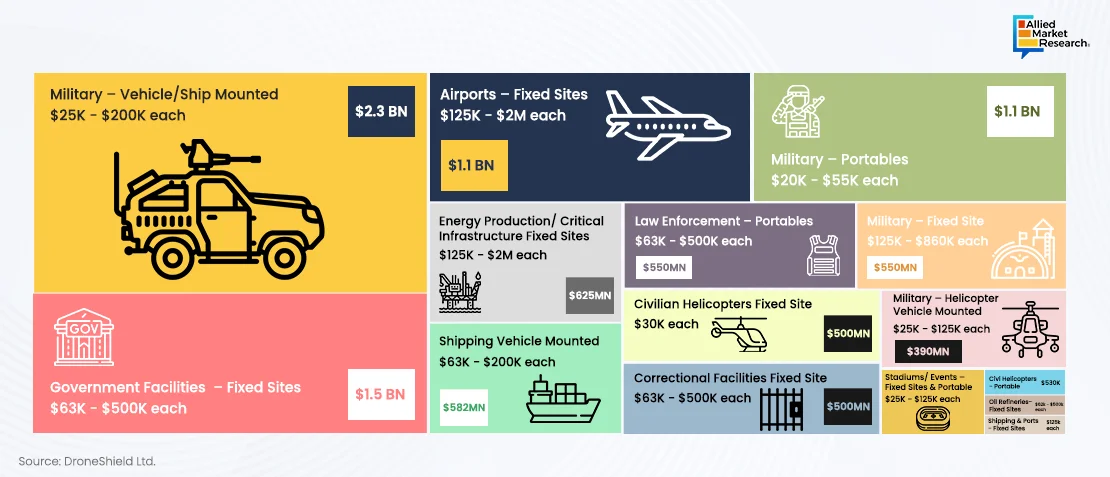
Comprehensive Adoption of Anti-Drone Technologies across Sectors
Anti-drone technologies are essential in a number of fields, each with unique needs and challenges. The military and defense sectors are significant influencers, as armed forces globally are increasingly focused on drones utilized for surveillance, reconnaissance, and attacks. Anti-drone systems protect military bases, convoys, and critical infrastructure from hostile drones and ensure battlefield superiority. For instance, in June 2024, Zen Technologies Limited delivered its Zen Anti-Drone System with Hard-Kill (Zen ADS HK) to the Army Air Defense College in India, enhancing the country’s defense capabilities against drone threats.
Airports have also become significant adopters of anti-drone systems due to potential risks to air traffic and passenger safety. These systems detect unauthorized drones and mitigate threats through jamming and kinetic interception, preventing disruptions in restricted airspace. Law enforcement agencies use anti-drone technologies to prevent contraband smuggling into prisons, unauthorized surveillance, and threats at public events. For example, in November 2023, Moscow’s Sheremetyevo International Airport installed an AI-powered radar system to detect and deter drones, distinguishing between birds, drones, aircraft, people, and vehicles.
The private sector, including logistics, entertainment, and agriculture, also adopts anti-drone technologies to protect facilities, ensure operational privacy, and comply with regulations. Logistics companies, for example, deploy anti-drone solutions to secure warehouses and distribution centers from unauthorized aerial surveillance. As drones become more accessible, individuals are increasingly concerned about privacy and security. Personal and residential anti-drone solutions, such as RF detection and jamming systems, help homeowners protect their properties from intrusive drones, maintaining privacy and security in an era of ubiquitous drone presence.
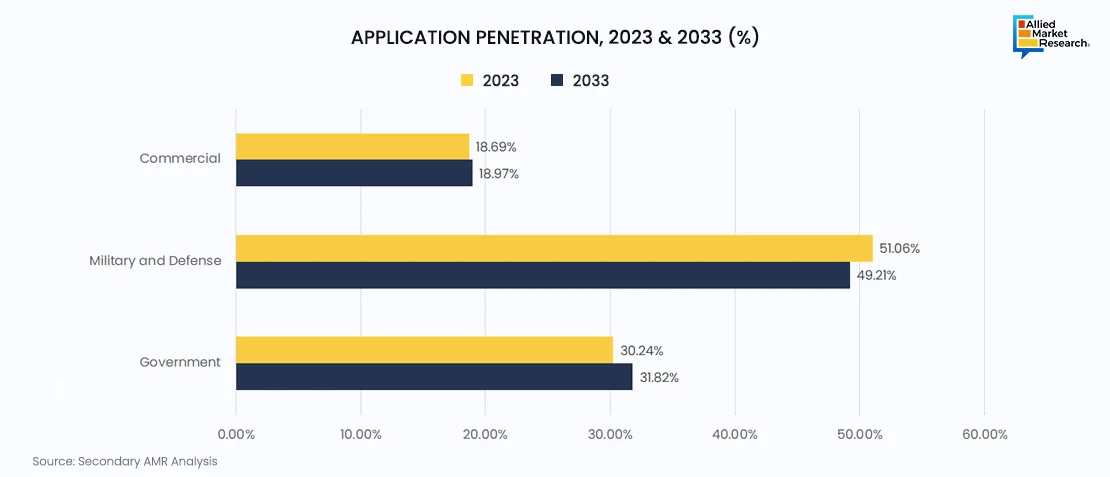
The above application penetration depicts that military & defense industry employs the anti-drone system on a larger scale due to the increased threat of drone attack across these sectors. Furthermore, the government sector employs the second leading anti-drone system due to the increased demand to ensure safety & security of governmental assets from drone threats & due to the increased availability of no-fly/restricted zones across countries.
Evolving Regulations and Global Cooperation in Drone and Anti-Drone Technologies
The regulatory landscape for drones and anti-drone technologies is evolving rapidly as governments and international bodies address emerging threats. Governments worldwide are implementing regulations to manage drone use, including restrictions on flight zones, registration requirements, and operational guidelines. Compliance with these regulations necessitates deploying anti-drone technologies to monitor and enforce no-fly zones and other restrictions, ensuring drones operate safely and legally. The use of anti-drone technologies is also regulated to prevent interference with legitimate communications. For example, in March 2023, the Indian military deployed laser-based Integrated Drone Detection and Interdiction Systems (IDD&IS) to address drone attacks along the border with China.
International cooperation is crucial for addressing global drone threats. Organizations such as the International Civil Aviation Organization (ICAO) and the European Union Aviation Safety Agency (EASA) work to harmonize regulations and standards for drone operations and anti-drone technologies. These efforts ensure consistent and effective responses to drone-related threats across countries and regions. The importance of comprehensive drone regulations and effective anti-drone technologies is highlighted by the rapid proliferation of drones and their potential for misuse. Governments aim to regulate drone usage and ensure countermeasures are safe, ethical, and do not infringe on civil liberties. This balanced approach manages the benefits and risks associated with drone technology. International cooperation and regulatory harmonization are vital for addressing the challenges posed by drones, fostering a safer environment for drone operations globally. As drone technology advances, regulations and anti-drone measures need to evolve accordingly. Collaboration among governments, international organizations, and industry is essential to keep regulations up-to-date and effective. This ensures drones are used safely and responsibly, maintaining public trust and safety.
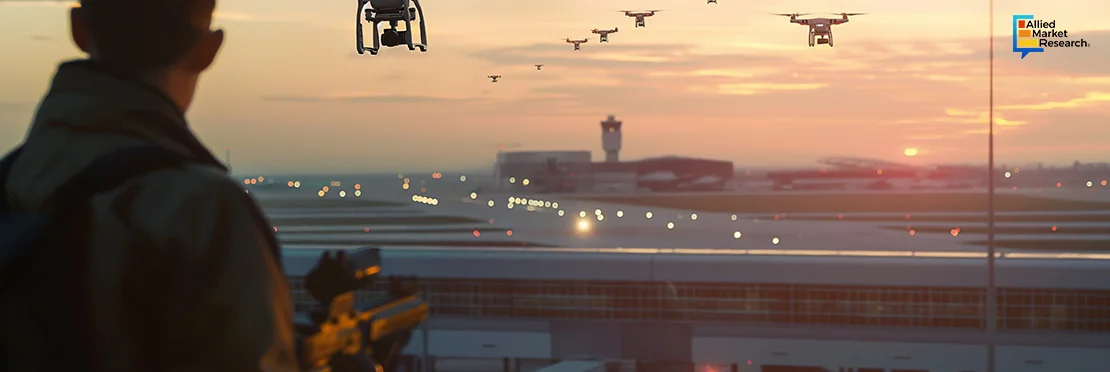
CASE STUDY: COUNTER DRONE IN UKRAINE
In military conflicts, drones are hard to defeat with traditional weapons. Kinetic systems struggle against swarms of small, fast drones, and the cost of using these weapons is much higher than the cost of the drones themselves.
Early efforts to counter drones fell into two main categories, both with their own issues. Low-cost systems only addressed a small part of the problem or sacrificed too much performance to stay affordable. On the other hand, high-end systems from defense firms were too expensive and complex, often designed for broader uses like Electronic Warfare. These systems were also too difficult for non-technical users and were attractive targets for attacks.
This divide was on display in Ukraine, where the Russians deployed full-scale EW such as their vehicle-based systems. However, these systems are expensive and vulnerable to attacks, making it difficult to deploy enough of them to offer widespread protection.
The hand-held and portable jammers seen in public reports look almost homemade. These basic jammers could be unsafe for the user. Their effectiveness is also uncertain. While signal jamming has been used since WWII, neutralizing drones today requires advanced technology. This includes sophisticated waveform and antenna design, effective jamming signals, and good heat dissipation.
How effective are Western counter drone systems against Russian drones?
Due to various issues affecting the Russian military-industrial sector, including degradation and compromises, Russian military systems often rely on imported commercial components. For instance, critical hardware in Orlan-10 drones incorporates components from China, Europe, and the U.S. Counter drone systems such as those by DroneShield, which are designed for commercial drones and components, are expected to be very effective in detecting and neutralizing such threats.
Developments Carving the Anti-Drone Industry
AI and ML technologies are expected to enhance detection accuracy, improve tracking algorithms, and enable autonomous decision-making in anti-drone systems. For instance, in February 2024, IIT Jammu developed a sound-based anti-drone system that detects the unique sound signatures of drones, enabling quick and flexible deployment. Miniaturization also allows for the integration of anti-drone technologies into existing security infrastructures. As drone swarms become more prevalent, counter-drone swarm technologies are being developed to detect, track, and neutralize multiple drones simultaneously. These systems use advanced algorithms to manage swarm dynamics and ensure effective mitigation.
With the development of drone technology, the rules and regulations will keep changing. Governments and international organizations are expected to create more consistent and detailed regulations to ensure drones are used safely and that effective countermeasures are in place. Consequently, the anti-drone industry is projected to expand into new regions and sectors as awareness of drone-related threats takes a leap. Regions such as Asia, the Middle East, and Africa are witnessing growing demand for anti-drone solutions due to security concerns and regulatory developments. Additionally, sectors like agriculture, logistics, and entertainment are exploring new applications for these technologies.
The Future of the Landscape
The anti-drone industry is a dynamic and rapidly evolving sector, driven by the need to address security, privacy, and public safety concerns associated with the proliferation of drones. Technological advancements, regulatory developments, and industry demand are shaping the future of the industry, offering significant opportunities for innovation and growth. As drones are becoming more common, effective anti-drone solutions are needed. Using advanced technology, international cooperation, and adapting to new threats will be essential. The anti-drone industry will help ensure drones are safely and securely integrated into society.
Allied Market Research explores anti-drone technologies and related products, offering vendors detailed insights into this evolving field. Our curated reports cover technological advancements, market trends, and government initiatives, helping businesses integrate counter-drone technology into their operations. To get more insights into the aerospace & defense domain, contact our specialists today!

